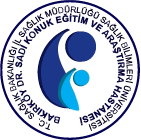ABSTRACT
Objective:
The aim of this study is to evaluate the surgical success rates of asymmetric (recession and resection) and symmetric (bimedial recession) surgery in infantile esotropia.
Material and Method:
The consecutive case series of infantile esotropic patients operated with resection and recession in one eye (Group I) and recessions of medial rectus muscles of both eyes (Group II) were compared for the surgical success, retrospectively. Sixty nine patients were operated for infantile esotropia between 1991 and 2003 and followed up at least for the first 3 months postoperatively. Patients were divided into two groups to describe the purpose of different surgical methods. Surgical success was defined as postoperative ±10 PD in Krimsky and ±50 in Hirshberg tests.
Results:
The surgical success rate of asymmetric surgery was 94% (30/32) and symmetric surgery was 90% (33/37). The statistical difference between success rates was not significant (p>0.05).
Conclusion:
In terms of surgical success for ortotropia, there was no difference between unilateral resection and recession in one-eye and bimedial recessions in both eyes.



